Asparagus is a food that a lot of people either love or hate, with few in between. But if you enjoy the delicious vegetable, you may be wondering how to grow it. Asparagus is actually a member of the lily family of plants. It grows on a flowering, perennial plant and is considered a stem vegetable because asparagus is essentially the stem of the plant.
Asparagus can be downright delicious when it’s grilled in butter, or sauteed with garlic and olive oil. There are many great ways to prepare these chewy stalks, but they always taste the freshest right from the garden. We’re going to teach you how to plant and care for asparagus, and which companion plants help the crop do its best.
Growing Asparagus
The best thing about asparagus plants is that they are perennials, so once you get an established plant it will return year after year. The plant is great for an ornamental because of its ferny leaves which make it look different from other food crops. One thing to note about growing asparagus is that it’s important to let the plant get established before harvesting. That means that in the first few growing seasons, it should be left alone without harvesting any spears.
The reason you shouldn’t harvest asparagus within those first few seasons is that you may take too much of the plant and prevent it from returning next year. It’s really important to get a garden bed established because once asparagus is growing it can keep producing a crop for around 15, and up to 30 years.
Asparagus grows best in cooler areas with long winters. This is because the edible part of the plant, which is the stem shoot, needs the dormancy period during winter to develop flavor and carbohydrate content. The plant is hardy in zones 3 through 8.
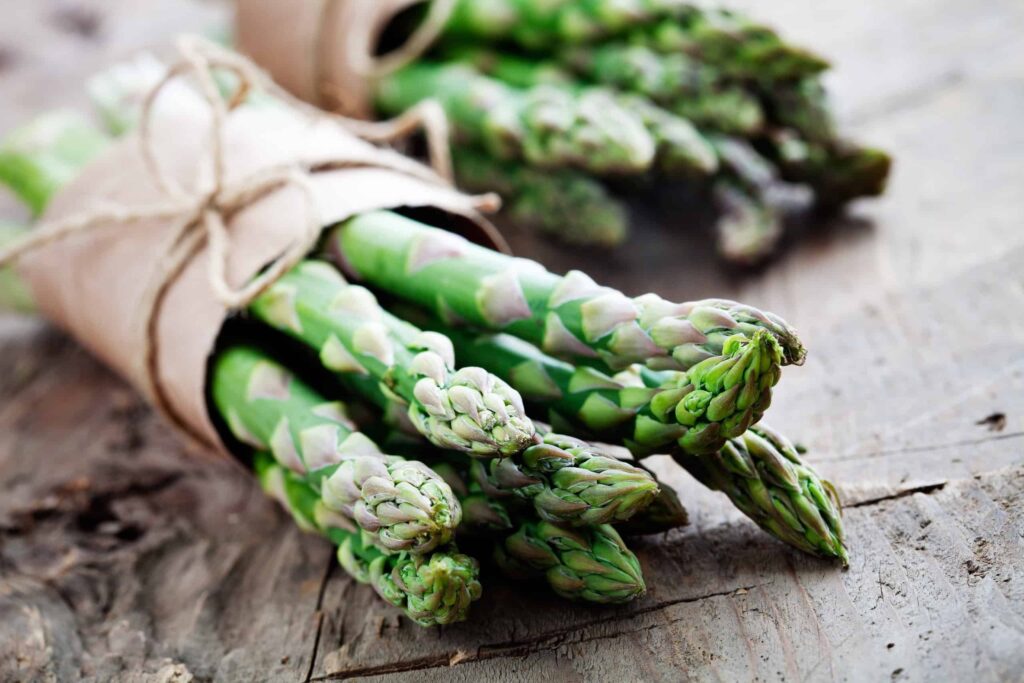
Asparagus is a delicious vegetable that makes for a great side dish to any meal.
©Kati Finell/Shutterstock.com
How To Grow Asparagus From Seed Or Crown
Before starting your seeds, you will need to choose a spot for your asparagus garden. Keep in mind that this will be a permanent place for your crop to grow for the next 10-20 years. Choose a spot that it can remain in for this long or longer. You’ll also want to pick an area that receives full sun, drains well, and doesn’t pool water. Asparagus does not like wet roots, so be sure that the water can drain from the soil.
Some gardeners choose to start the plant from seed, and others grow it from 1-year-old plants called “crowns”. Starting from crowns speeds up the process because the plants are easier to establish. You also don’t have to worry about as much weeding because the stalks will be above the ground already.
Starting Your Seeds
If you want to grow the crop from seed, you’ll want to start the seeds indoors during spring about 12 to 14 weeks before your last frost. It’s important to note that not all varieties grow best from seed, either, so look into the specific variety you want to check.
Start by soaking the seeds in water for up to 24 hours, then sow them in moistened peat soil. Let them grow until the stalks are 12 inches tall, then set them outside for around a week to harden. After this week, and once the last frost of spring has hit, transplant them into a temporary garden bed. Wait until the fall for the plants to mature, then plant the male asparagus plants into your permanent garden bed. You can identify the male plants because they won’t have any berries. They are more productive than female plants and should be used to establish your asparagus crop.
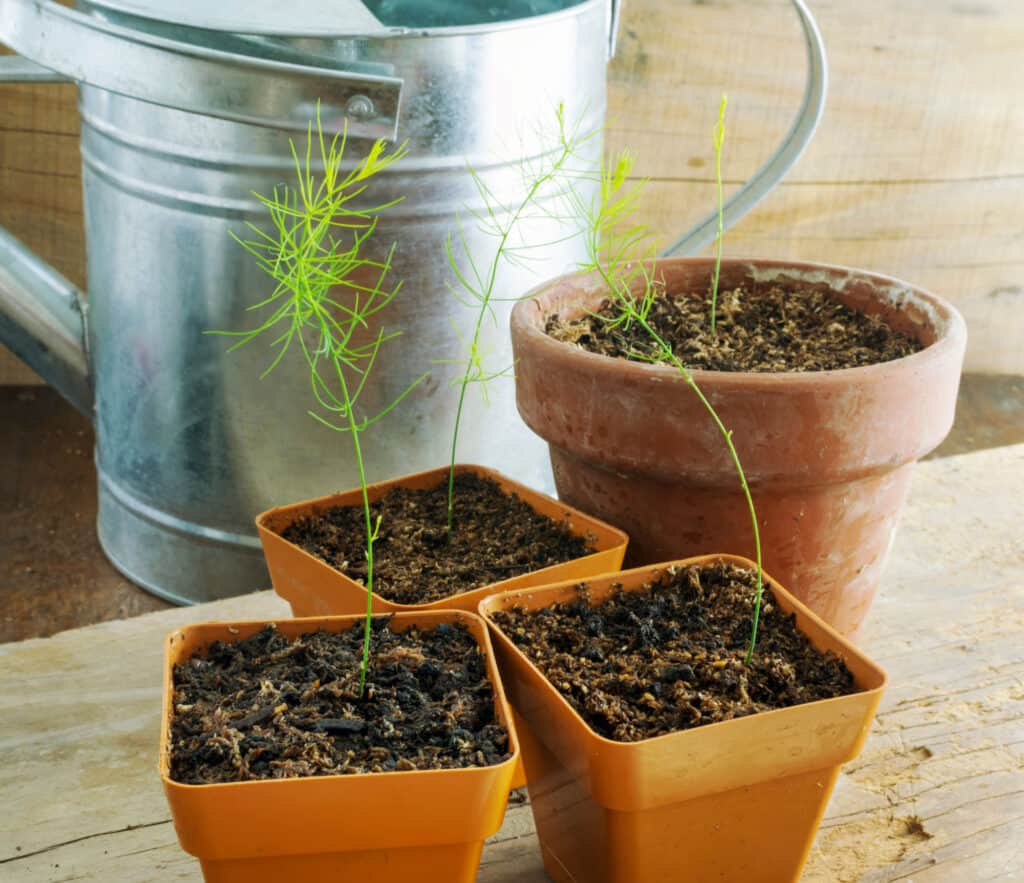
Young asparagus are very delicate. Placing them outside for a week helps the plant to harden and be able to survive once it is permanently planted in the ground.
©Gaston Cerliani/Shutterstock.com
Companion Plants For Asparagus
Companion planting is the idea of planting multiple crops next to each other to help one another grow more successfully. Some plants keep bugs away, others neutralize the pH of the soil, and others simply grow better when planted with other species. A few companion plants do well with asparagus including tomatoes, grapes, basil, parsley, dill, coriander, comfrey, zinnias, marigolds, and petunias.
Tomatoes
Tomatoes make for excellent companion plants for asparagus. This is because they are in the nightshade family and emit solanine. Solanine is what makes the leaves and stalks of tomato plants poisonous. It also repels the most destructive pest of asparagus plants: the asparagus beetle. Other nightshades like peppers and eggplants are also great companion plants for asparagus because of their emission of solanine.
Not only do tomato plants protect asparagus, but the asparagus plants also benefit the tomatoes. Asparagus plants emit a natural type of fungicide that prevents early blight and botrytis. The fungicide can also help deter nematodes, which are small worms that damage the roots of tomato plants. Tomatoes and asparagus plants are the best combinations for companion planting because they are both so mutually beneficial.

Tomatoes and asparagus are the perfect garden combination because they are mutually beneficial.
©Paul Maguire/Shutterstock.com
Grapes
The best thing about growing grapes and asparagus together is that there will be no competition for growing space. Grapes grow vertically on trellis systems, while asparagus grows in the ground. Both plants are perennials, so they will grow together for many years without replanting. This is beneficial to the asparagus because you won’t be constantly uprooting and replanting its companion crop. It’s also beneficial because you’ll have a permanent harvest area in your yard that requires minimal upkeep. They also live well in similar soil conditions, so they should be very easy to grow with one another.
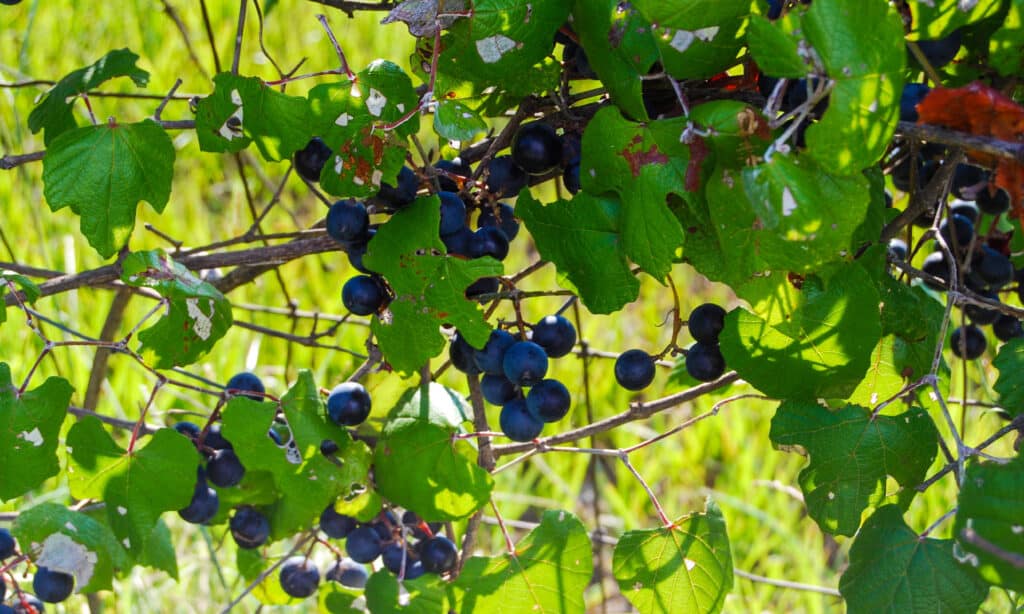
Grapes grow above the ground on trellises, so they won’t be competing with your asparagus plants for growing space.
©CatherineTheGreat/Shutterstock.com
Basil
Basil is a great companion plant for almost any plant. That’s because of its pest-control properties. Basil also helps with attracting beneficial insects like predatory wasps by providing food and shelter for them. In turn, the wasps target and consume other pests that may negatively affect the asparagus.
Basil is also such a great companion plant because it’s small and won’t compete for soil or sunlight. It does best in partial shade, so plant your basil beneath or near the taller asparagus plants to protect the basil’s fragile leaves.
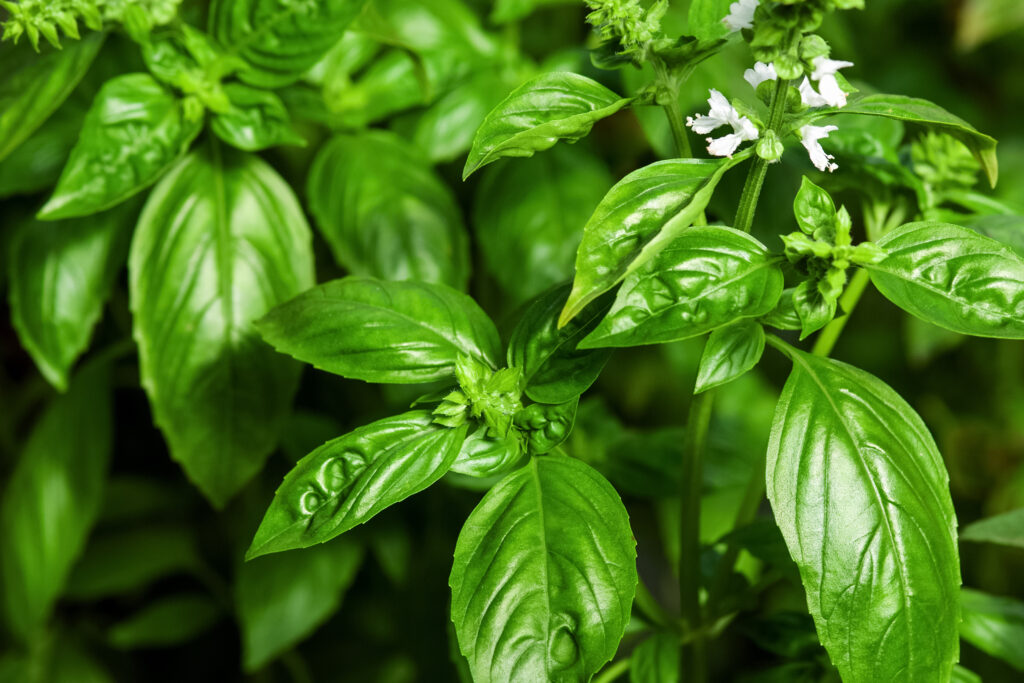
Basil is a great companion plant for asparagus because it attracts beneficial insects and pollinators.
©Nadya So/Shutterstock.com
Parsley
Parsley, like basil, provides food and shelter for beneficial insects. It also repels the asparagus beetle and a few other pests, like the tomato hornworm. Planting parsley along with tomatoes and asparagus is a great way to maximize your companion plant garden.
Parsley is a biennial herb, so you’ll have to replant it every two years or sooner to keep the harvest going continuously.
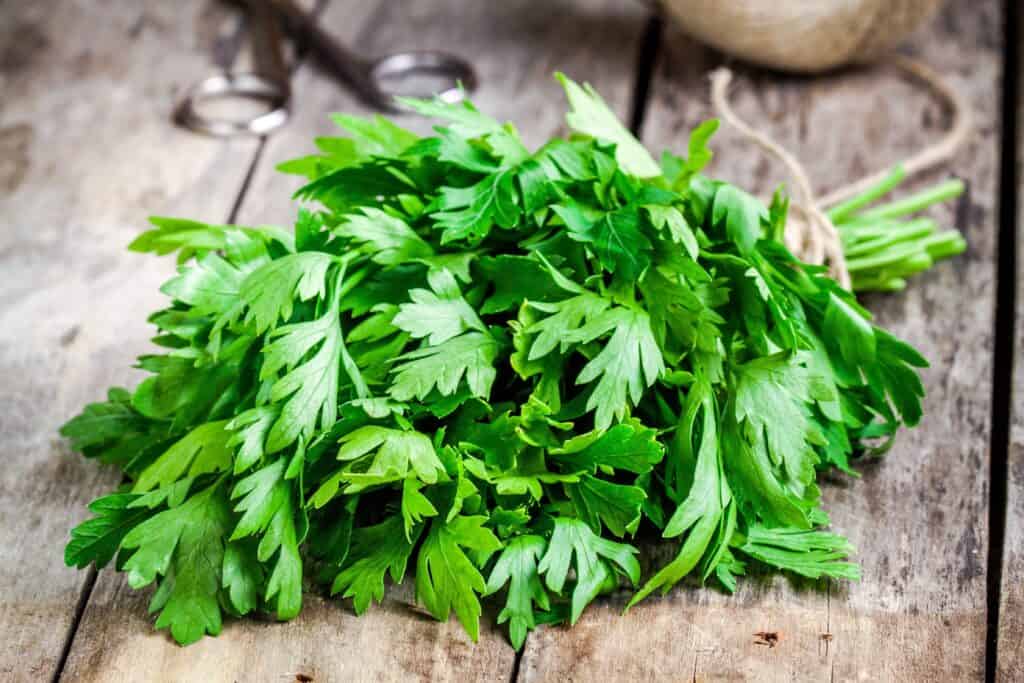
Parsley is a biennial herb that belongs to the family of Apiaceae.
©nblx/Shutterstock.com
Dill
Dill is a beautiful, versatile herb. Its flowers bring beneficial insects which help with pest control for asparagus plants. Like basil, dill thrives in partial shade, so it does well when planted in the shade of taller asparagus plants. Dill repels aphids, spider mites, and squash bugs. You can plant dill, parsley, and basil with your asparagus for a trifecta of pest repellence.
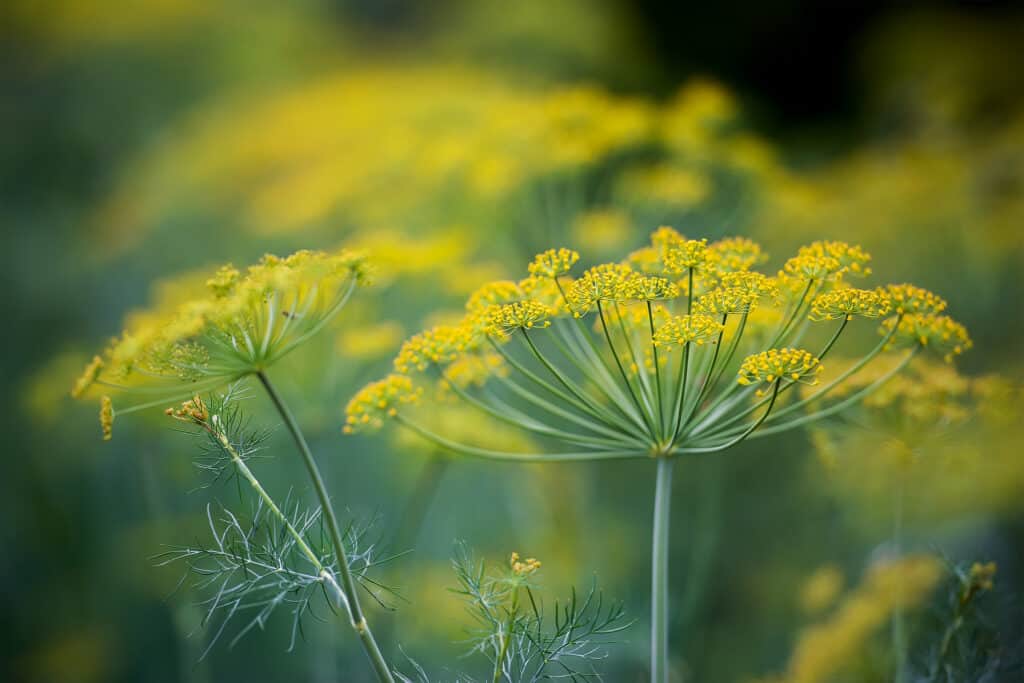
Dill flowers are attractive to pollinators.
©PaniYani/Shutterstock.com
Coriander
Like many other herbs, coriander works by repelling aphids, spider mites, and other pests. The strong scent it gives off helps to deter insects. Coriander also has a shallow root system, so it won’t compete with the asparagus plants for water or nutrients.
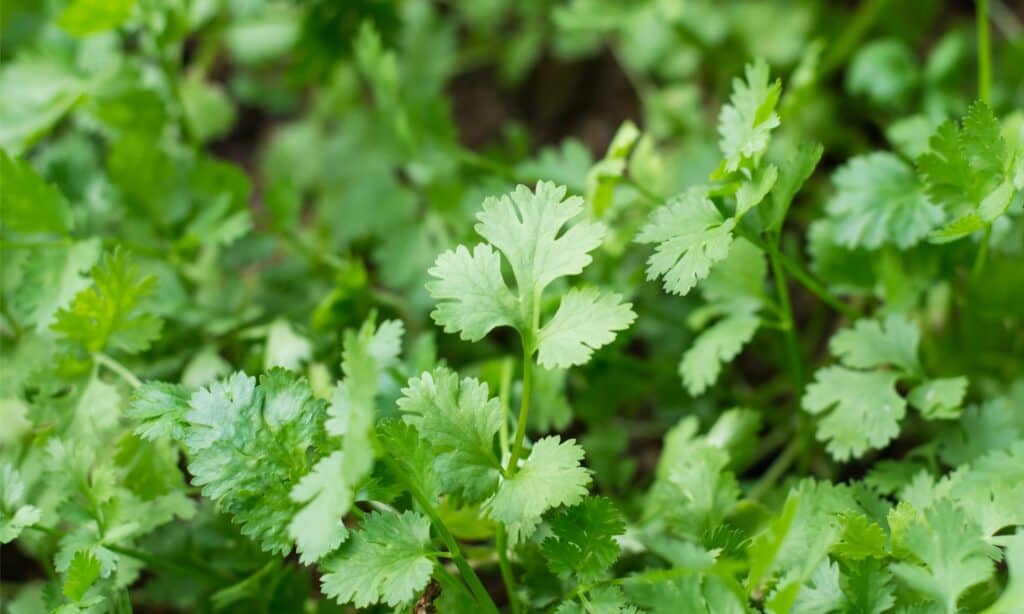
Cilantro is also known as coriander.
©iStock.com/Tevarak
Comfrey
Comfrey can help asparagus by adding nutrients like nitrogen to the soil. It also boosts pollinator activity in your garden, which in turn will help your asparagus plants. Like coriander and dill, comfrey has pretty shallow root systems so it won’t compete with asparagus for nutrients in the soil. It’s also a perennial plant, so you’ll only have to plant it once to harvest from it for many years.
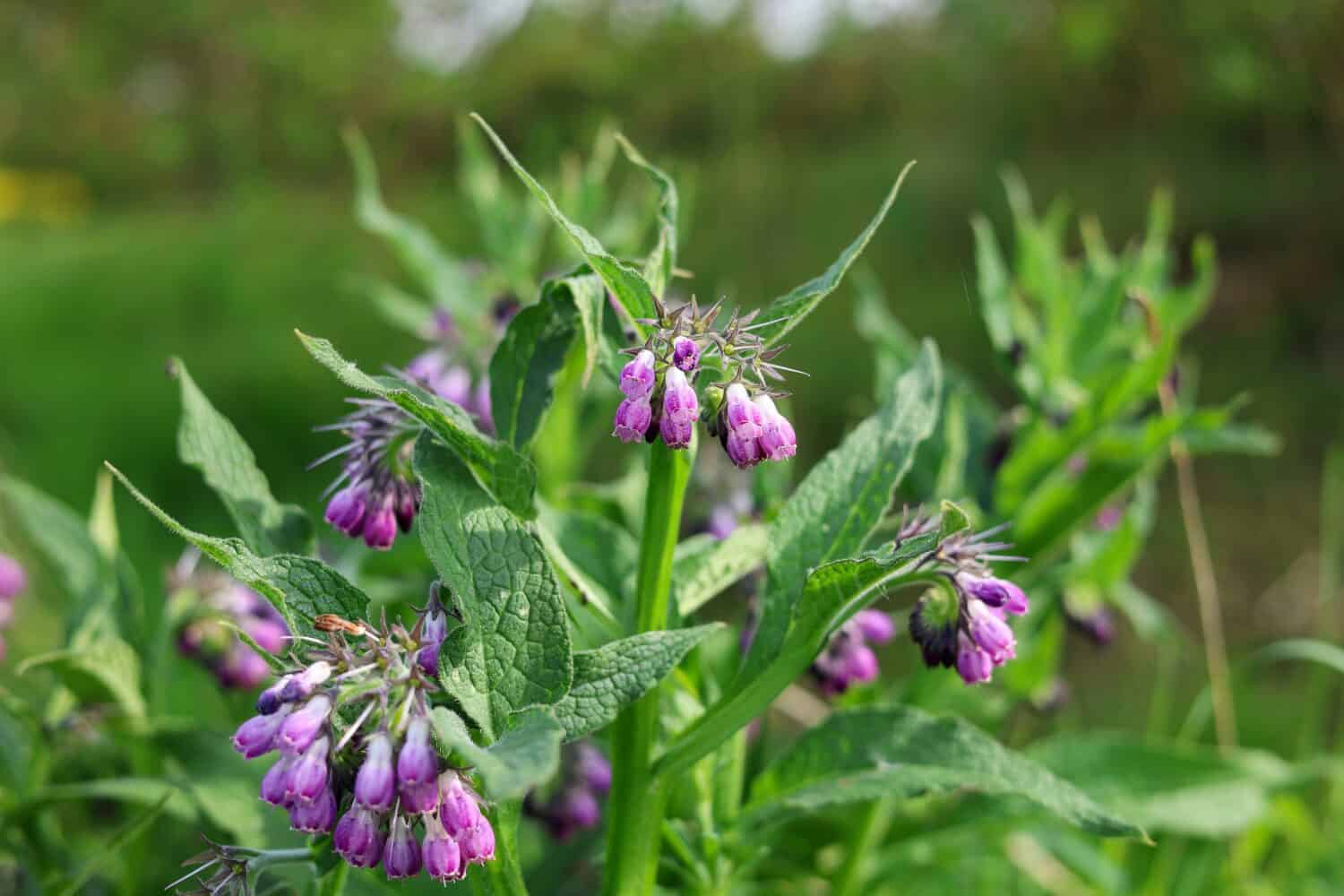
Comfrey is a great companion plant that will return year after year.
©MaCross-Photography/Shutterstock.com
Zinnias
You can plant much more than just food crops and herbs with asparagus. There are also a few types of flowers that help asparagus grow well. One of these is zinnias. Zinnias attract pollinators and good insects that eat pests. They attract parasitic wasps, ladybugs, and praying mantises.
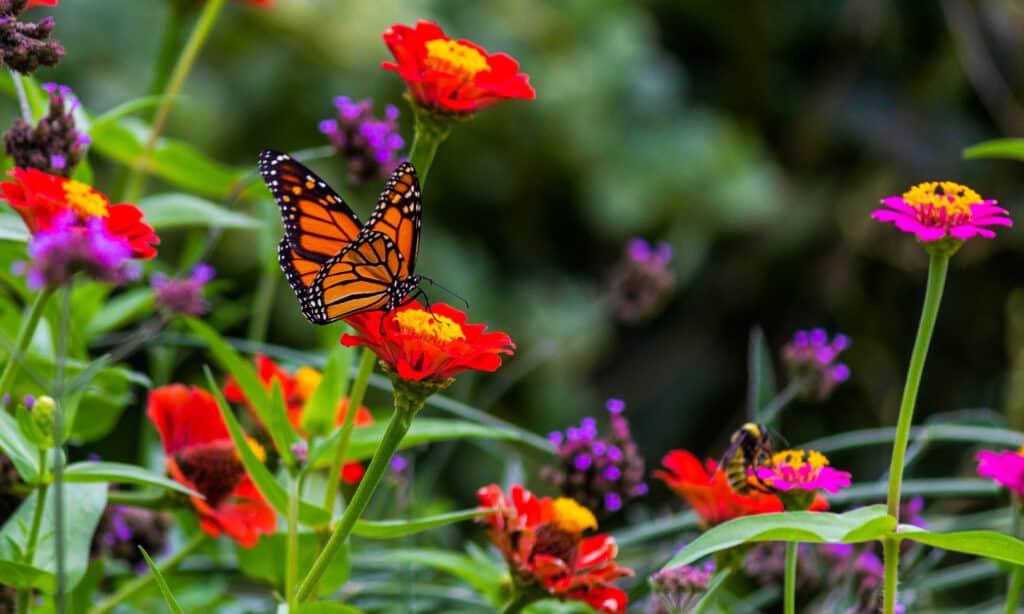
Zinnias will bring color and pollinators to your asparagus garden.
©Kate Scott/Shutterstock.com
Marigolds
Marigolds are a great crop to grow with asparagus because they produce gorgeous, edible flowers. They repel pests like worms, whiteflies, and the enemy of tomato plants: nematodes. A garden of marigolds, tomatoes, and asparagus is sure to flourish together.
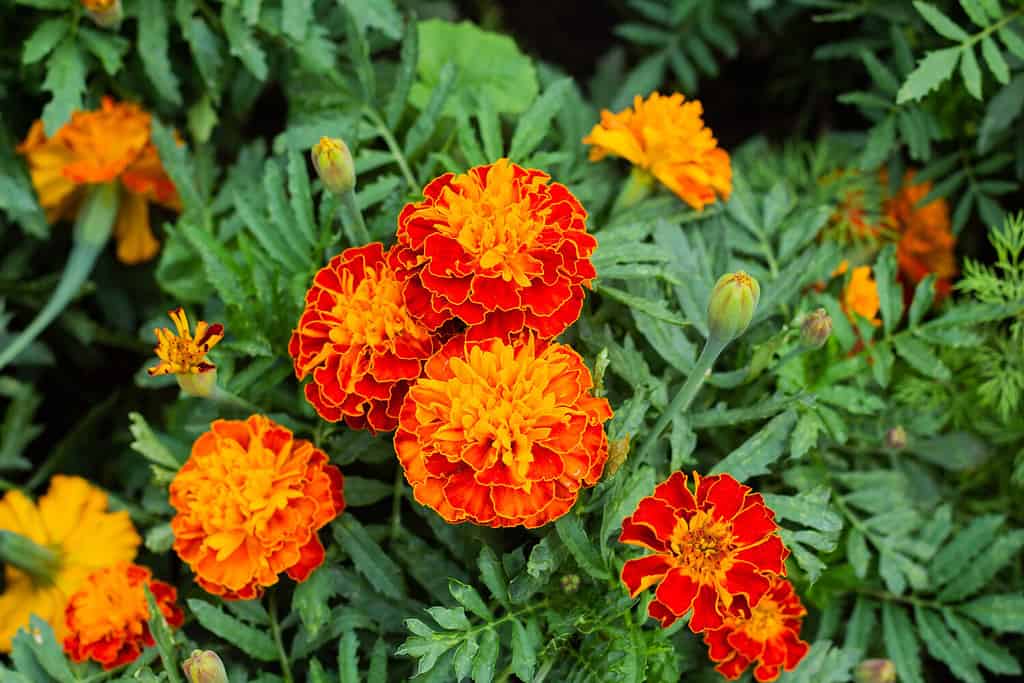
Did you know that marigold flowers are edible?
©FunFamilyRu/Shutterstock.com
Petunias
Another beautiful flower to add to your asparagus garden is petunias. They’re super easy to grow and attract pollinators while repelling pests like caterpillars and beetles. Plus, they make your garden look absolutely stunning! Their long branches help retain moisture in the soil while also keeping it cool.
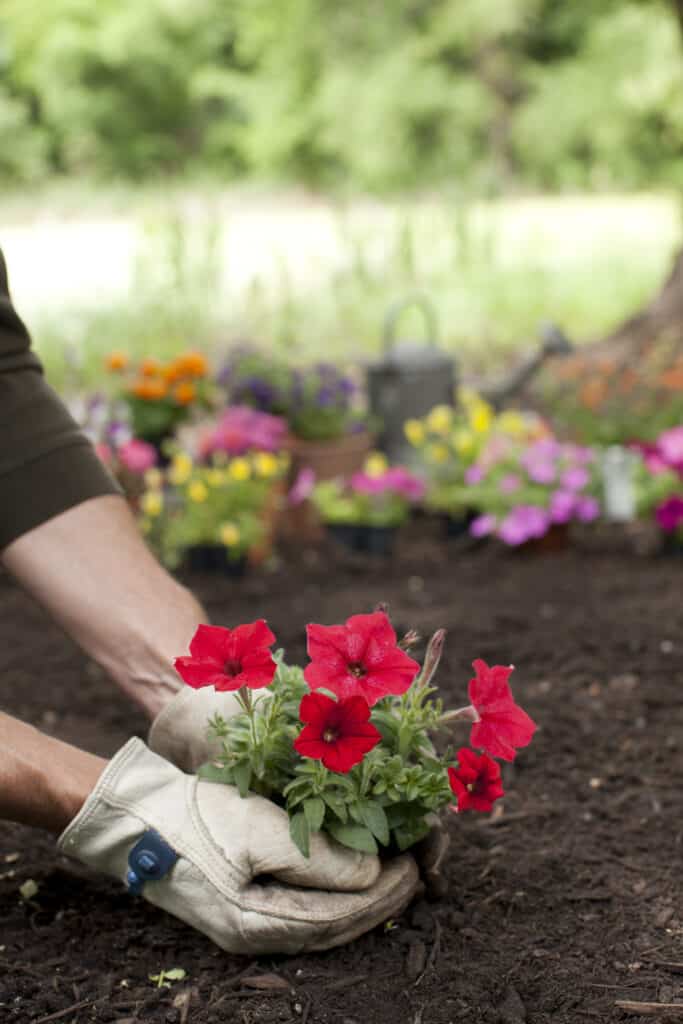
Petunias can repel caterpillars and other pests.
©iStock.com/Liliboas
Plants To Avoid
There aren’t too many plants that you’ll have to avoid, but there are a few to take note of. One of these is potatoes. Potatoes don’t really negatively affect the asparagus in any way, but potato plant growth can be stunted if grown with asparagus. That’s because the potato and asparagus roots are both pretty deep in the soil and require similar nutrients. In fact, potato plants require a lot of nutrition, making them a hard companion plant for many gardens.
Onions also require a lot of nutrients to grow, so they don’t do well as companion plants to asparagus. If you plant onions near asparagus, it will make for a small production from both plants, if any.
While you may think garlic would be a great companion plant because it repels aphids, mites, and other pests, it’s not the best. That’s because garlic has deep root systems that will compete with and threaten those of asparagus plants.
Like garlic, carrots also have deep root systems because they are long root vegetables. They require a lot of nutrients, like asparagus, and will compete for those nutrients. They also attract a few pests, like carrot flies, which will eat asparagus plants. Carrots also don’t grow well with a few of the companion plants like dill. That’s mainly because dill and carrots are such close relatives that they can have cross-pollination with one another. The cross-pollination would cause the carrots and the dill to taste terrible!
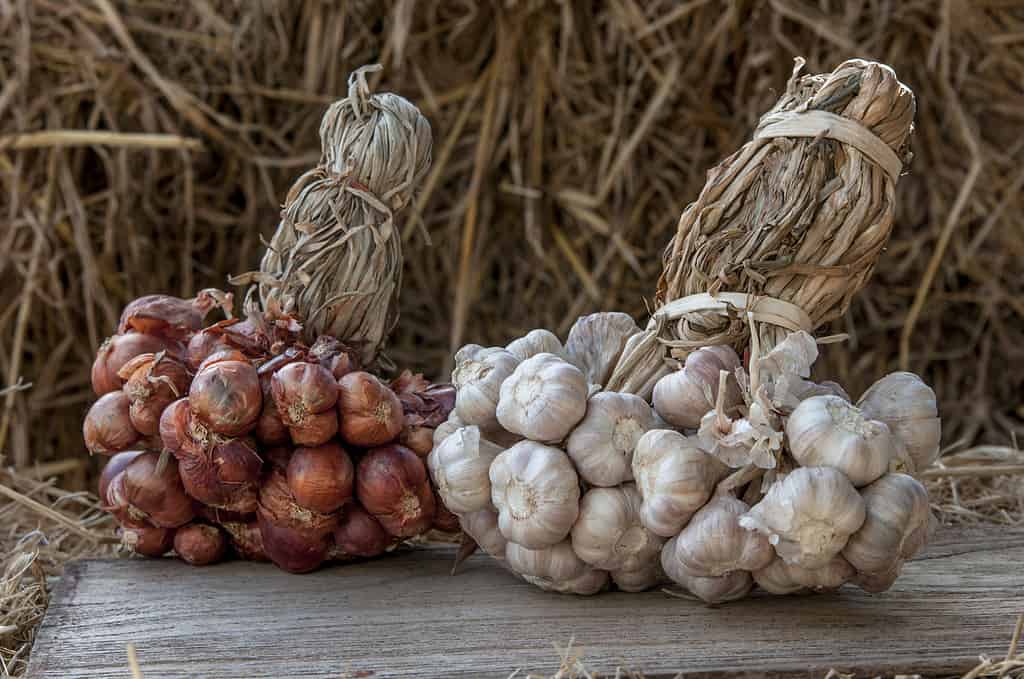
While onions and garlic are great crops to grow, they don’t do well with asparagus plants.
©Tongsai/Shutterstock.com
The photo featured at the top of this post is © iMarzi/Shutterstock.com
Thank you for reading! Have some feedback for us? Contact the AZ Animals editorial team.







